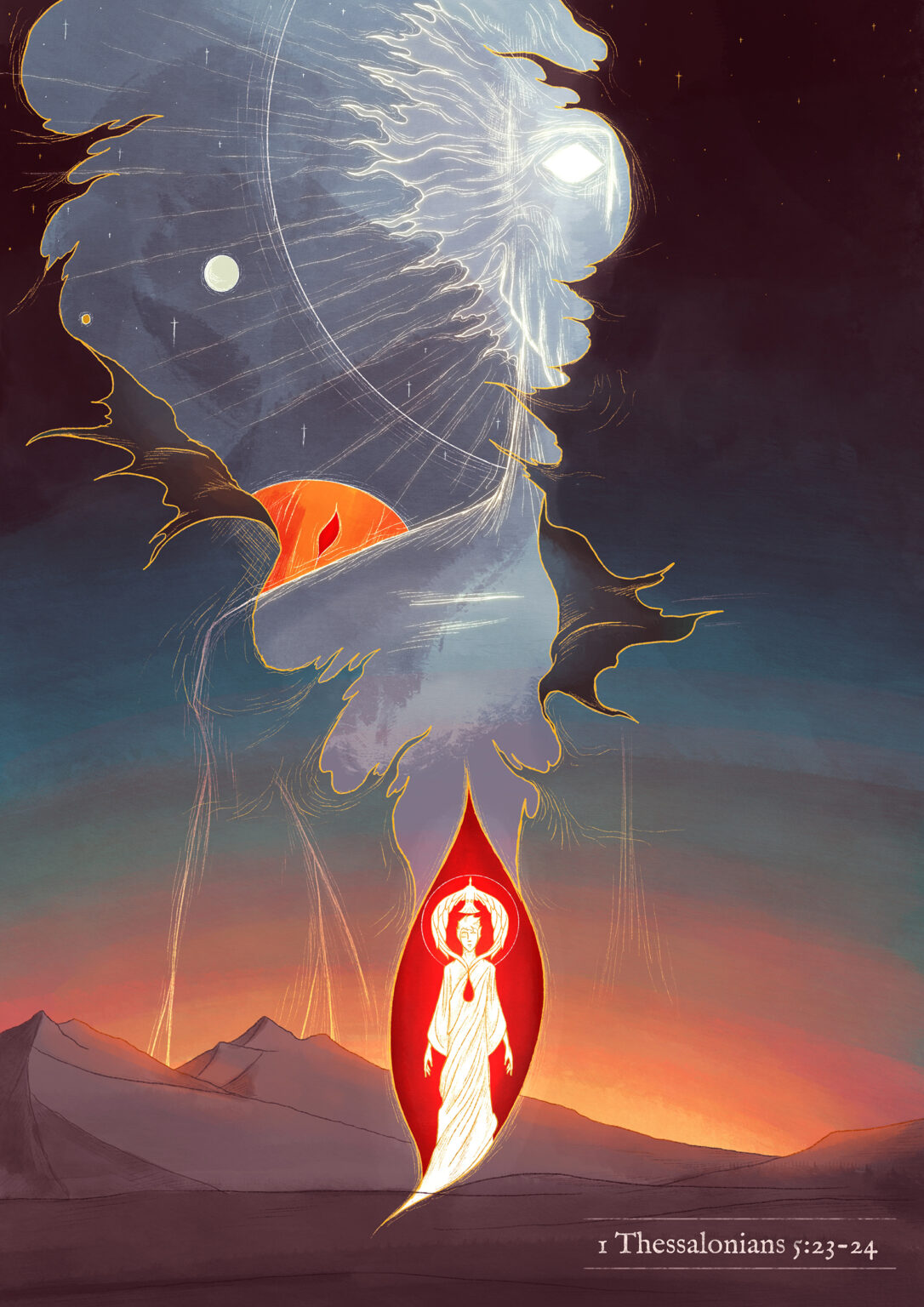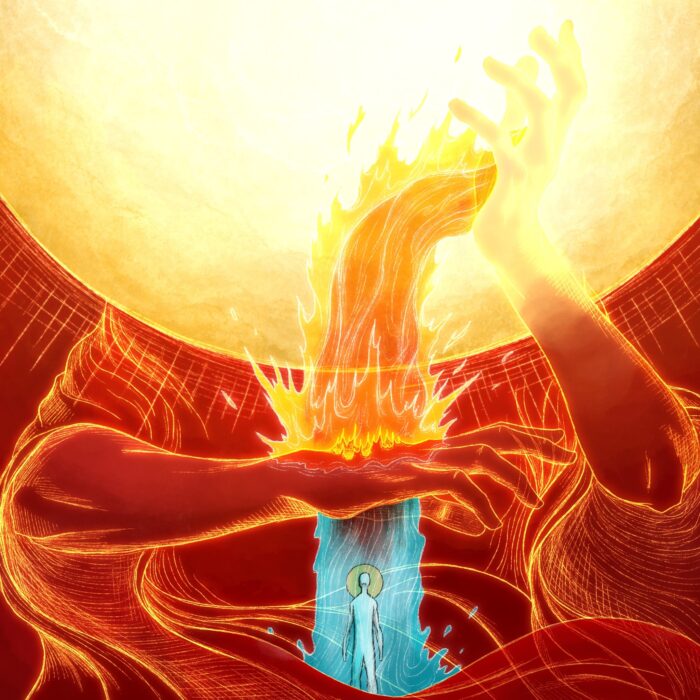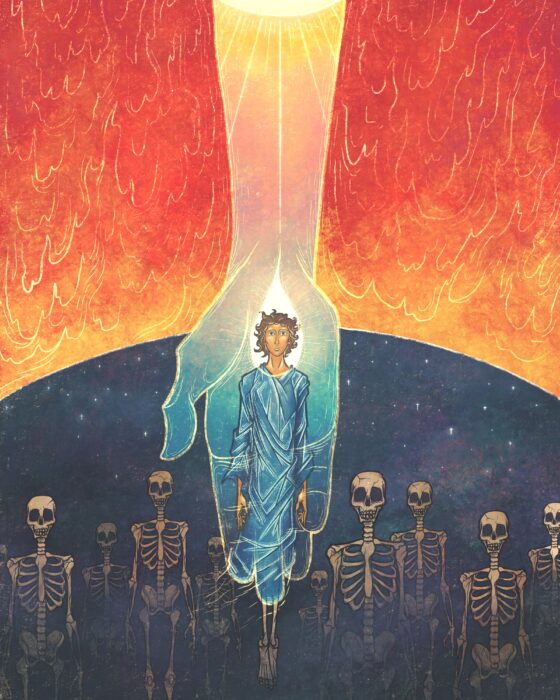1 Thessalonians 5:23-24, “Now may the God of peace Himself sanctify you completely, and may your whole spirit and soul and body be kept blameless at the coming of our Lord Jesus Christ. He who calls you is faithful; He will surely do it.”
The Passage Explained:
Paul’s words here echo his earlier call to holiness in 3:11-13. In both passages, it is significant to note that Paul acknowledges God Himself as the one who must act decisively if anyone is going to be holy / sanctified. Ultimately, “holiness” is God’s own supreme love for and joy in Himself within the Trinity; no one is essentially holy except for God Himself. If anyone or anything is to share in the total devotion to God that is His holiness, God Himself must act to make them holy. Just as pieces of metal laid upon a super heated surface will become hot by the heat of the surface, so too if anyone or anything is made holy / sanctified, it is only by the holiness of God Himself.
Paul’s conviction that it is decisively God Himself who will sanctify (make holy) his people likely derives from his reading of the Old Testament, especially passages like Ezekiel 37:24-28. This text anticipates YHWH’s eschatological dwelling in the midst of his people (v.26) with the result that He will sanctify His people / cause them to be holy. When the Lord finally dwells with His people, He Himself will sanctify them completely (v.28), His wrath toward them will be no more (as implied in His return to dwell with them after have exiled them in wrath), and His purifying presence with them will be a witness of His Name to all nations.
For Paul, this great day of YHWH’s sanctifying, self-revealing dwelling with His people has already begun. The Lord is in the midst of His people by the Spirit (Eph.2:22), and by that indwelling Spirit, individual believers are united to Christ and so transfigured into living stones, as it were, in the eschatological temple of the risen Son (Eph.2:19-21).
How does YHWH dwell in the midst of His people? Firstly by taking on their own nature and actually living among them in the tabernacle of His own flesh and blood (John 1:14, 2:21). Then, upon His resurrection, the True Temple of God—Jesus Christ—pours out the living water of His Spirit (foreshadowed in the flow of water at His death) so that, by that Spirit, all of His people might be incorporated into His own body, growing up into a single dwelling place for God.
By God’s dwelling with us in Christ, He has come to dwell in us by the Spirit, so that we might be made to dwell in Christ by spiritual union, and so become a dwelling place for God….The One True Triune God sets His sanctuary in our midst by weaving us into His own life through the crucified and risen Jesus and the outpoured Holy Spirit. It is in this way that He sanctifies His people, keeps them for Himself, and declares His name to the nations.
_______
The Picture Explained:
In this image I tried to emphasize that it is God who sanctifies and keeps His people for Himself by “setting his sanctuary in their midst” (Ez.37:28), that is to say, by weaving them into His own life through the Gospel.
Notice that the believer’s halo (an indication of holiness) is formed by the Spirit himself; the Holy Spirit dwelling in us is the one who sanctifies us. And yet the Spirit sanctifies us only because of what God has done in Christ to reconcile us to Himself (thus the Spirit applies the drop of Christ’s blood the the believer’s heart). Finally, the Spirit sanctifies us only because—by the achievements of Christ—the Spirit unites us to / makes us one with / hides us in Christ (thus the believer is depicted as being literally within the wound of Jesus’ side). Only by virtue of union to the Holy One—Jesus Christ—are we holy, and we are united to Him only because of what He has done in His death and resurrection, and this union is affected only by the personal bond of union who is Himself the Holy Spirit. All of this I try to picture in the lower half of this image.
Above the saint, the sky tears open and Christ’s face is partially revealed. This is a depiction of the “coming of our Lord Jesus Christ” which Paul mentions in 1 Thessalonians 5:23. The fact that the believer’s whole spirit, soul, and body will be preserved blameless on that day is pictured in the saint being hidden in the side of and covered by the redeeming blood of the very one who is splitting the skies with His appearing. On the day when all earth and heaven flee from the face of the risen Christ, the only place of safety will be the refuge cleft in His side. This element of the image—coupled with the Spirit’s function as halo and as the applier of Christ’s blood—emphasizes that it is God Himself (in His Son, by His Spirit) who will keep His people for Himself until the last day. He who calls us is faithful, and He will surely do it.



